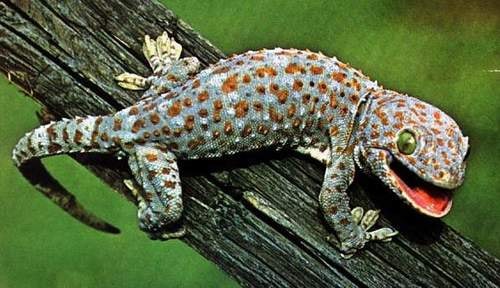How to process and preserve geckos
How to prepare
In traditional medicine, gecko is a precious medicine. Previously, only wild geckos lived in the wild. But due to over-hunting, they became scarce.Therefore, to have a source of medicinal materials, many places have raised geckos using semi-wild methods. However, to ensure the quality of medicinal materials, it is necessary to know how to process and preserve them.
How to prepare
If the gecko is still alive, use a mallet or small iron hammer to lightly hit its head, where the brain is behind the eye, to kill it. Hammer a small nail into a wooden board. Turn the gecko over, press its head into the nail, and pull its legs back with your hands. Use a sharp knife to make a straight cut from the middle of its belly to where its thighs join its body. Remove the intestines and squeeze out any blood that has accumulated in its head. Use gauze or tissue paper to absorb all the blood.
The two front legs and two hind legs are stretched straight horizontally. Use a bamboo strip to measure horizontally from the tip of one leg to the tip of the other, cut it to fit, then deep the splint. Gently pull the two front legs and two hind legs to stretch and straighten the splint. There are two ways to stretch the abdomen:

- Cross brace: One brace stretches from the front right leg to the back left leg, one brace stretches from the front left leg to the back right leg.
- Parallel splint: The abdomen is divided into two parts. The upper part of the chest is stretched with a wide, rectangular splint, placed near the front legs. The lower part of the abdomen is stretched with a wide, slightly semicircular splint because the abdomen gradually tapers, placed near the hind legs.
Use a long, thin, and stiffer splint to pass under the splints along the spine, from head to tail. Take paper and roll it tightly, tie it straight with the splint along the spine so that when drying, the tail will not bend. The splints must be made of old bamboo that has been soaked and dried to avoid termites. After stretching, heat it with charcoal or dry the whole body slowly until dry. When the whole body is dry, turn the head down and the tail up to dry only the head. When the eyes are dry and feel hard when squeezed, it is done.
How to preserve
Geckos are easily damaged by termites. Mice also love to eat geckos, especially the tail. Therefore, dried geckos must be put in a sealed box. The box may contain camphor and cinnamon. If possible, add desiccants such as silica gel or roasted rice.
In spring and summer, dry once every 20 days. Dry with charcoal or in a drying oven at 60 - 70°C. Dry the whole body, especially the head. When drying, pay attention, the tail must be raised because the tail is the main part and contains a lot of fat. Too high a temperature can cause the fat to melt. In autumn and winter, dry once every 15 days. After each drying, smooth and straighten the splint.
It should be noted that geckos should not be dried with sulfur because it can cause deterioration, fading of the shiny color and mold on the body. If there is a small amount and you need to process it immediately for use as a tonic, you can prepare it simply as follows:
One or two large geckos with tails, cut off four feet and remove the head from two eye sockets up, skin, gut, remove intestines and wash. After finishing, cut into pieces, cook with rice into porridge with a little fresh ginger. Or you can make medicinal wine to treat bone and joint pain by: using 3-4 dried geckos, cut off four feet and remove from two eye sockets to the mouth, then cut into small pieces, soak in ginger juice and fry until golden. Then, crush or leave the whole piece, soak in 1,000ml of white wine with a little dried tangerine peel (tran bi) for 10 days and it can be used, drink 1-2 times a day, 20ml each time.
According to Health & Life - NT






